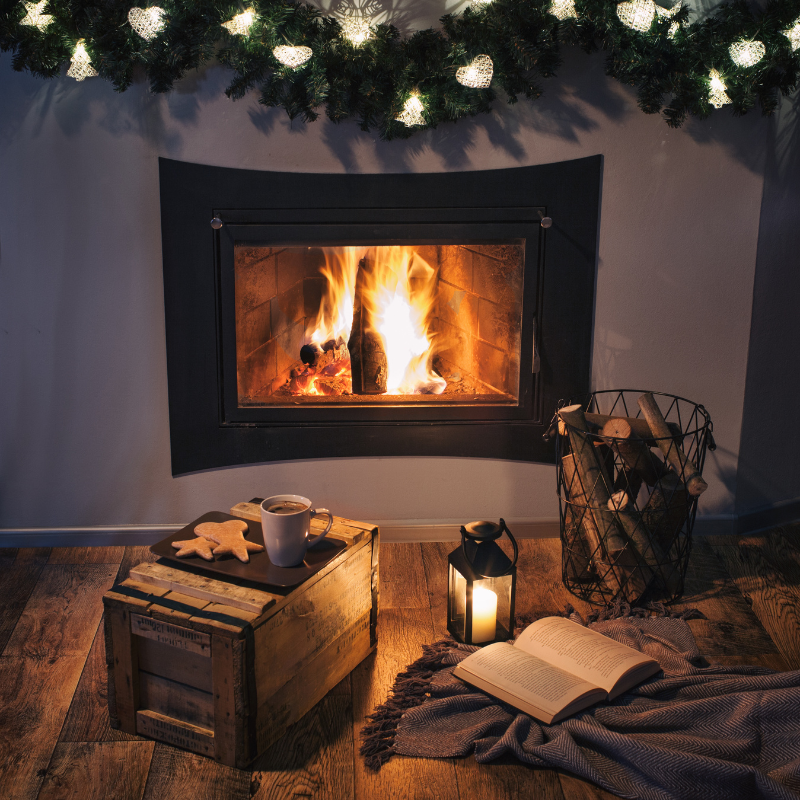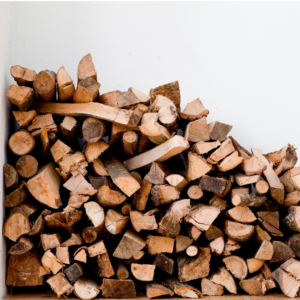You want a hot, clean fire – the kind that warms your home’s ambiance and temperature without jeopardizing the safety of your environment. A significant factor in creating the ideal blaze is what you’re burning. Not all fuels are created equal, so thinking through what goes in your fireplace can be the difference between generating comfort or concern.
What Not To Use
Your fireplace is not intended as a way to dispose of garbage, construction scraps, or packaging. That means not burning any of the following:
- wrapping paper
- paper plates
- garbage
- styrofoam
- plastic
- colored paper
- treated lumber
- painted or sealed wood,
- plywood
- magazines/newspapers
- leaves
- Christmas trees

One issue with these types of items is that they may burn at the wrong temperature. Your chimney system is durable, but a fire that’s too hot can cause damage and compromise its integrity. And a fire that doesn’t burn hot enough can be smokey, causing discomfort and premature, excessive build-up of soot and creosote. It can also generate cooler flue gases, which will not vent efficiently – and this can create a dangerous situation.
In addition to temperature factors, many items contain chemicals that can become extremely hazardous when burned, or they can release particulate matter that can contribute to respiratory issues. This is the case for many substances, such as styrofoam, plastic, and colored paper, and this includes many wood products such as treated lumber, painted or sealed wood, plywood, and MDF.
Finally, there are physical factors at play. Bulky, odd-shaped items are more likely to have embers tumble out as they break down. And lightweight items such as magazine pages, leaf bits, or dry Christmas tree needles can drift out of your fireplace or up your chimney while ignited, increasing risk of an uncontained fire.
Seasoned Wood: The Right Fuel for Your Fire
So, what can be safely burned? The only appropriate fuel for your fireplace is seasoned wood.
Seasoned firewood is simply wood that’s been cured until much of its natural water content has been released. Green (newly cut) wood has a high water content that should be reduced to the sweet spot of around 15-25% before burning it. Seasoned wood won’t require as much of the fire’s energy to be used to evaporate off moisture, and this means you’ll have a nice, hot blaze.
Along with this, if the firewood is damp or green, it won’t burn cleanly. Incomplete combustion causes creosote to build up in your chimney, and since creosote is highly combustible its presence drastically increases the chance of a chimney fire. It also causes more smoke, vapor, and improper ventilation of gases than if firewood is properly seasoned – meaning a diminishment of indoor air quality.
Not sure how to tell whether your firewood is ready to use? Seasoned firewood is:
 ✓ darker in color than green wood
✓ darker in color than green wood
✓ looks cracked and split
✓ feels lighter in weight than damp/fresh wood
✓ makes a hollow knock (rather than a dull thud) when struck against another piece
Another way to check the readiness of your firewood is with a moisture meter, which can be picked up at most hardware or big-box stores. Again, the desirable range for a reading is 15-25%.
Firewood FAQs
Does the species of wood affect its suitability for use in your fireplace?
Hardwoods and softwoods do burn a bit differently due to variation in density. The heat output of firewood is a factor of what the wood weighs – not its size. That means that more dense wood, which weighs more for its size, will generate a hotter, longer-lasting blaze for the amount of logs you use.
Hardwoods, such as oak, walnut, cherry, and maple, are more dense. They may be a bit more challenging to get lit than softwoods, but you’ll be rewarded with logs that burn longer and produce more intense heat once they’re going. In contrast, softwoods will burn more readily and quickly than hardwoods and with less intense heat.
What type of wood do sweeps recommend burning?
Both hardwood and softwood are suitable for use in your fireplace if properly dried, and if you have access to a variety you can leverage their advantages. Use softwoods as kindling, to stay comfortable on spring and autumn days, or when you’re winding down for the evening and won’t want your fire to keep burning as long. On colder nights, reach for hardwood logs for a hot, long-lasting blaze. Or, you can combine wood species to have greater control over the warmth of your fire.
How should I stack my woodpile?
Whether hardwood or softwood, correctly storing your firewood will help season and maintain it. The key is air circulation – you want as much surface area of your firewood exposed to wind and sun as possible. Firewood should be split, then stacked off the ground with the top of the pile covered to protect it from precipitation – but the sides of the pile open to the wind and, if possible, the sun.
How long does wood take to season?
If your firewood is green, keep in mind that it will take 6-12 months to season properly, and that hardwoods will season more slowly than softwoods. Once your firewood is ready to use, be sure you’re grabbing the most well seasoned logs for your fire – giving greener pieces the chance to season and preventing ready logs from going to waste.
Call Us Today
Whichever type of firewood you choose, be sure to have your chimney swept and inspected before using your fireplace for the season. Our professional sweeps will expertly remove any buildup of creosote and soot, as well as any obstructions. With regular inspections and sweepings by our crew, you’ll be ready to enjoy that hot, clean blaze knowing your system is up to the job!
Call 434-481-3796 or reach out online today to get started.
